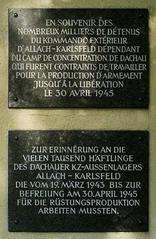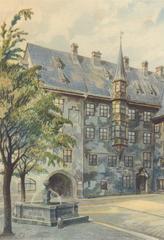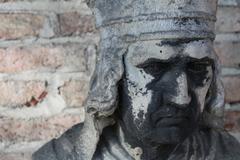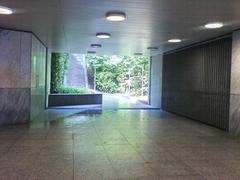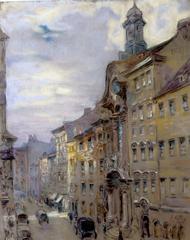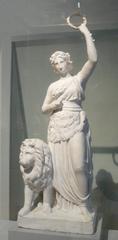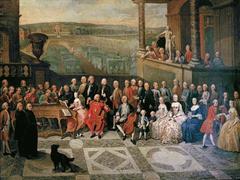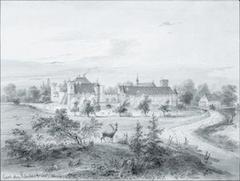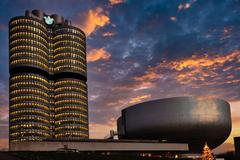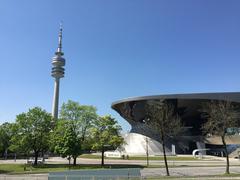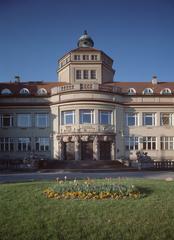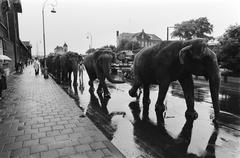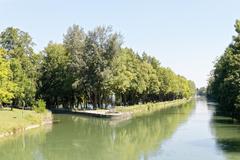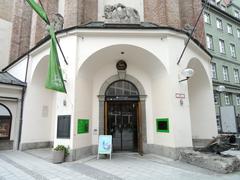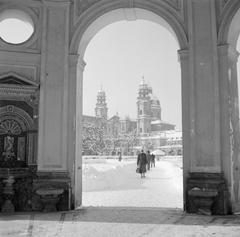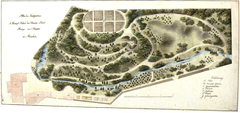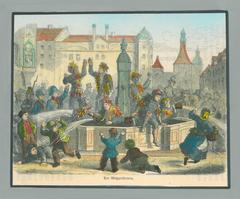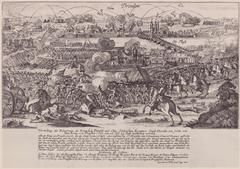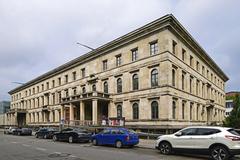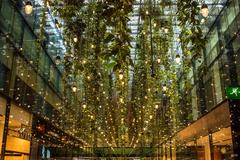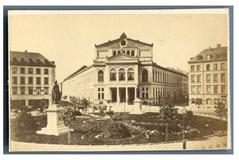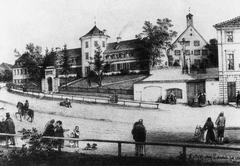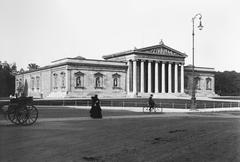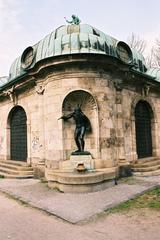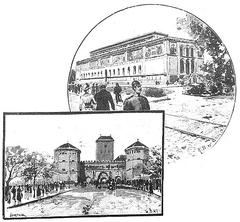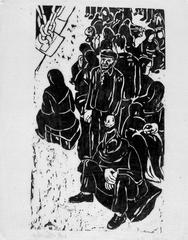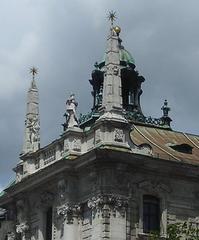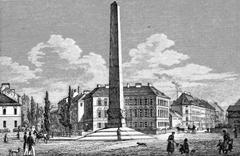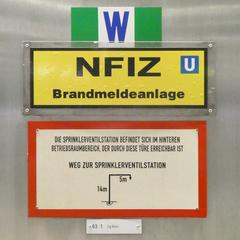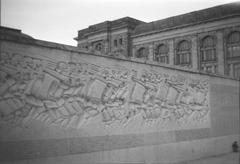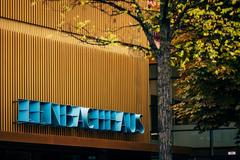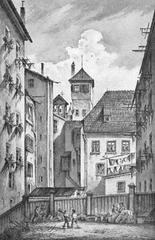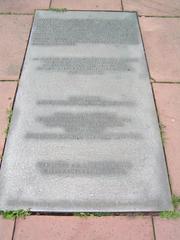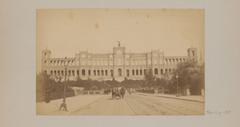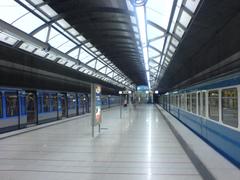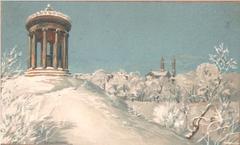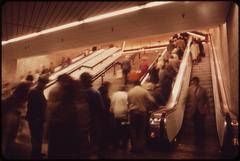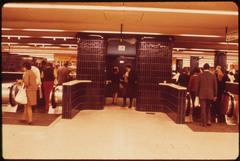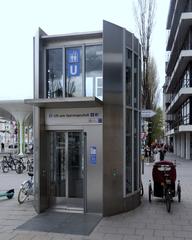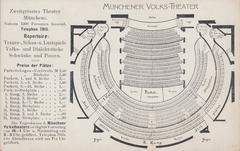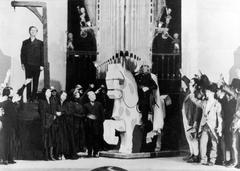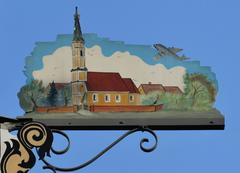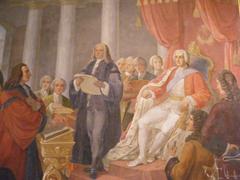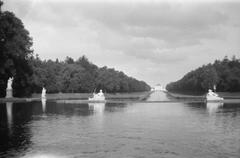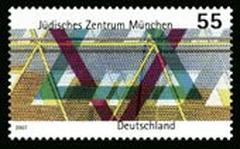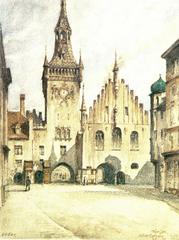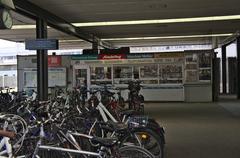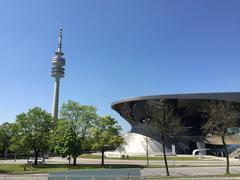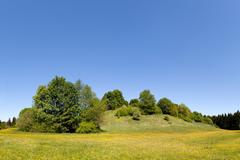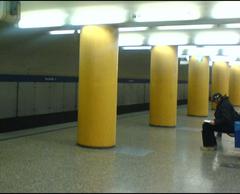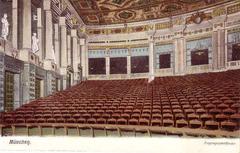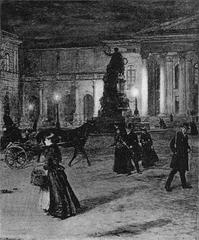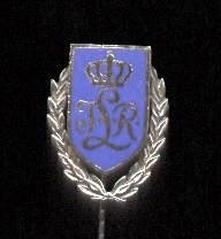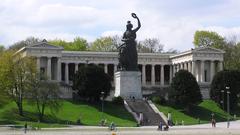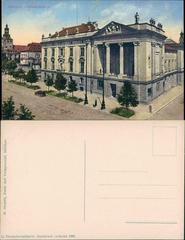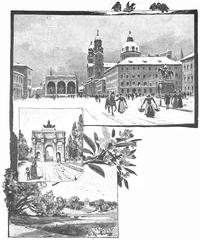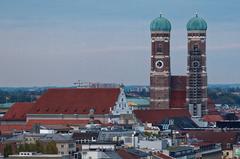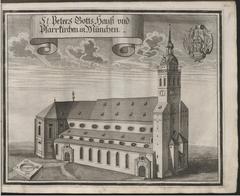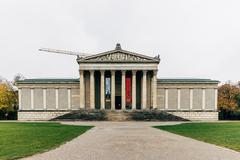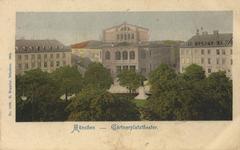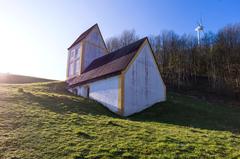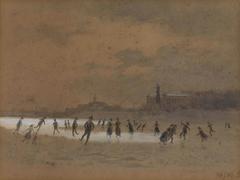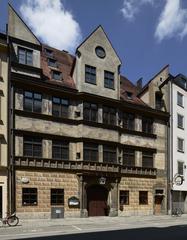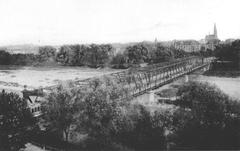Visiting Walking Man Munich: History, Tickets, Hours, and Tips
Date: 01/08/2024
Introduction
Munich, Germany, is a city that seamlessly blends rich historical heritage with contemporary innovation. Among its many attractions, the Walking Man sculpture stands out as a striking example of modern public art. Located in the bustling Schwabing district, this 17-meter-tall sculpture was created by renowned American artist Jonathan Borofsky in 1995. Commissioned by Munich Re, a global reinsurance company, the Walking Man symbolizes progress, dynamism, and the relentless pursuit of goals, making it a poignant landmark in Munich’s cultural landscape (Wikipedia).
The Walking Man has captivated both locals and tourists with its minimalist yet imposing design. Its faceless, giant figure invites various interpretations, from the universality of human experience to the anonymity of modern urban life. This comprehensive guide aims to provide visitors with detailed insights into the history, significance, and practical aspects of visiting the Walking Man, ensuring a memorable experience in Munich (Absolute Munich).
Table of Contents
- Introduction
- History of the Walking Man
- Design and Symbolism
- Public Reception
- Location and Surroundings
- Nearby Attractions
- Cultural Impact
- Artist’s Legacy
- Visitor Information
- FAQ
- Conclusion
- References
History of the Walking Man
Creation and Commission
The Walking Man, a striking 17-meter-tall sculpture, was created by American artist Jonathan Borofsky in 1995. The project was commissioned by Munich Re, a global reinsurance company, in collaboration with the City of Munich. Borofsky, known for his monumental and architecturally oriented works, was one of six artists invited to participate in a competition for the new Munich Re building. His proposal, which emphasized themes of progress and dynamism, was ultimately selected (Wikipedia).
Construction and Installation
The construction of the Walking Man was a meticulous process that spanned over a year. Initially sculpted in Sun Valley, California, the statue was crafted in nine separate pieces. These pieces were then transported to Munich, where the final assembly took an additional five weeks. The statue was officially presented to the public on September 21, 1995, by Hans-Jürgen Schinzler, then-head of Munich Re, and Christian Ude, the mayor of Munich (Absolute Munich).
Design and Symbolism
The Walking Man is a snow-white steel pipe sculpture that weighs 16 tonnes (35,000 pounds). Its imposing height and minimalist design make it a prominent feature in the Schwabing district of Munich. The statue’s sweeping step and forward stride symbolize progress, purposefulness, and the will to disrupt. Borofsky’s choice of white for the sculpture likely ties back to themes of modernism and progression, although the exact reason remains speculative (Absolute Munich).
Public Reception
Since its installation, the Walking Man has been well-received by both critics and the public. It has become a beloved landmark in Munich, particularly popular with children and tourists. The statue’s faceless, giant figure captures the imagination and has been adopted by the local community as a symbol of the city’s modern art scene. Over the years, it has become an integral part of Munich’s cultural landscape (Munich Travel).
Location and Surroundings
The Walking Man is strategically located on Leopoldstraße, next to the Munich Re business premises. This area is part of the upscale Schwabing district, known for its blend of historical and modern elements. The statue is just a few minutes’ walk north of the Munich Siegestor and close to the famous English Gardens, making it easily accessible for visitors exploring the city (Absolute Munich).
Nearby Attractions
Visitors to the Walking Man can also explore several nearby attractions. The English Gardens, one of the largest urban parks in the world, offers a serene escape with its lush greenery and picturesque landscapes. The Bavarian Victory Gate (Siegestor) is another notable landmark in the vicinity, symbolizing peace and victory. Additionally, the museum district of Munich (the Kunstareal) is home to a plethora of art museums, providing a rich cultural experience for art enthusiasts (Absolute Munich).
Cultural Impact
The Walking Man has had a significant cultural impact on Munich. It stands as a testament to the city’s commitment to public art and its ability to engage and inspire urban communities. The statue’s presence has also contributed to the cultural vibrancy of the Schwabing district, attracting both locals and tourists to the area. Over the years, it has become a symbol of Munich’s dynamic spirit and its embrace of modern art (In Germany).
Artist’s Legacy
Jonathan Borofsky, the artist behind the Walking Man, is renowned for his large-scale sculptures that often depict human figures in motion. His works can be found in various cities around the world, including the Hammering Men series in Frankfurt, Seattle, Seoul, and Lillestrøm. Borofsky’s creations are celebrated for their ability to capture the essence of human progression and the complexities of modern life (Wikipedia).
Visitor Information
Visiting Hours and Tickets
The Walking Man is located in a public space and can be visited at any time, making it an accessible attraction for all. There are no tickets required to view the sculpture, allowing visitors to enjoy it freely.
Travel Tips
The statue is easily accessible via public transportation, with several bus and tram stops nearby. Visitors can also enjoy a leisurely walk from nearby landmarks such as the English Gardens or Nymphenburg Palace. The area around Leopoldstraße offers a variety of eateries, ranging from Asian cuisine to traditional Bavarian fare, making it a great spot to relax and enjoy a meal after viewing the sculpture (Absolute Munich).
Accessibility
The area around the Walking Man is wheelchair accessible, ensuring that everyone can appreciate this remarkable piece of public art. Additionally, the nearby public transportation options are equipped to accommodate visitors with disabilities.
FAQ
Q: What are the visiting hours for the Walking Man sculpture? A: The Walking Man is an outdoor sculpture and can be viewed at any time.
Q: Do I need to buy tickets to see the Walking Man? A: No, there are no tickets required to visit the Walking Man. It is free to view.
Q: How can I get to the Walking Man sculpture? A: The sculpture is located on Leopoldstraße in Munich’s Schwabing district and is easily accessible via public transportation.
Conclusion
The Walking Man is more than just a sculpture; it is a symbol of Munich’s modernity and cultural richness. Its history, from conception to installation, reflects the city’s dedication to public art and its ability to inspire and engage its community. As a prominent landmark, it continues to attract visitors from around the world, contributing to Munich’s reputation as a vibrant and dynamic city (Munich Travel).
References
- Exploring Munich’s Iconic Walking Man: History, Visiting Hours, and Nearby Attractions, 2024, Various Wikipedia
- Exploring Munich’s Iconic Walking Man: History, Visiting Hours, and Nearby Attractions, 2024, Various Absolute Munich
- Exploring Munich’s Iconic Walking Man: History, Visiting Hours, and Nearby Attractions, 2024, Various Munich Travel
- Exploring the Walking Man Sculpture in Munich: Visiting Hours, Tickets, and Cultural Significance, 2024, Various Nomadic Matt
- Exploring the Walking Man Sculpture in Munich: Visiting Hours, Tickets, and Cultural Significance, 2024, Various The Broke Backpacker
- Complete Guide: Visiting the Walking Man in Munich – Tips, Tickets, and Nearby Attractions, 2024, Various Turbopass
- Complete Guide: Visiting the Walking Man in Munich – Tips, Tickets, and Nearby Attractions, 2024, Various Miss Tourist
